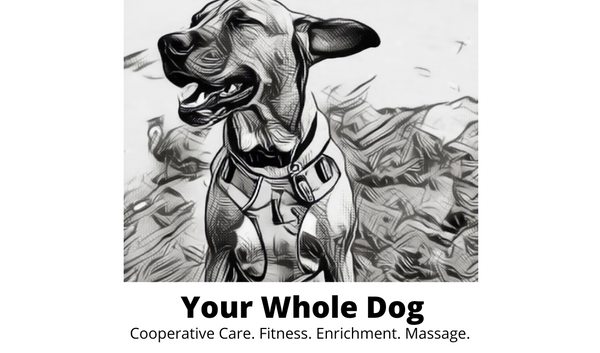Myth Busting Monday: Treats Make Dogs Fat! 🐾
Ugh! This one just will not go away!
One of the most common myths I hear is that using food in training makes dogs fat. It’s an understandable concern - after all, many dogs are overweight. However, treats themselves aren’t the problem.
Overfeeding, using low-quality ‘treats’, and under-exercising are.
Food in training: a powerful tool, not a problem
Positive reinforcement training relies on rewards to strengthen (reinforce) desired behaviour, and food is hands-down the easiest, most effective reinforcer for most dogs. It’s quick to deliver, easy to measure, and highly motivating. And, let’s face it, we’re going to be feeding them anyway! Despite this, many people hesitate to use it generously because they worry it will lead to weight gain.
Here’s the thing: training food isn’t ‘extra’ food - it’s part of your dog’s daily intake. The key is to use it wisely. Instead of adding treats on top of meals, adjust meal portions to account for what’s used in training. That way, you’re not overfeeding - you’re just distributing calories differently throughout the day.
Generous, strategic, use of reinforcers makes learning efficient, reduces frustration, and helps build behaviour habits.
Smart choices for food rewards
Not all treats are created equal!
Many commercial dog ‘treats’ are highly processed, full of fillers, and nutritionally poor.
Instead of using generic store-bought treats, consider:
- Using your dog’s regular food (especially if they’re on a high-quality diet).
- Offering fresh, real food like cooked chicken and other meats, cheese, fruits such as blueberries or pieces of apple, or veggies.
- Convenience options such as high-quality, high-meat-content air-dried food.
A good training reward should be:
- Something your dog likes (so it’s actually reinforcing!)
- Healthy and minimally processed
- Used in appropriate portion sizes and factored into daily intake
Reinforcement should be valuable, something your dog likes and will ‘work’ for. If your dog isn’t motivated by their kibble, it may be an indication they don't really like it!
Training success depends on using something your dog actually wants!
Pro tip: Keep track of training rewards and adjust meal portions accordingly.
Weight management: it’s not all about the scales
Many guardians assess their dog’s weight based on the number on the scales, a breed standard, or even comparisons to other dogs. A healthier and more accurate way to determine if a dog is in good shape or overweight is body condition scoring (BCS).
BCS involves checking key indicators such as:
- An easily visible waistline, when viewed from above
- A visible abdominal tuck
- Easily felt ribs with no (or, at most, a minimal layer of) fat covering them
Whilst the numbers on the scales can tell you if you're heading in the right direction (or not!) I encourage guardians to learn how to assess their dog’s body condition. This is more helpful than fixating on a target weight.
Every dog is an individual, and ‘ideal’ weight looks different on different bodies.
Curious to see your dog’s score? Have a look at Lyka’s body condition score chart and check out their article on the importance of weight management
Bottom line
Food should be considered an essential tool in training, and using it generously doesn’t mean your dog will get fat. With mindful portioning and quality food choices, you can reinforce good behaviour while keeping your dog at a healthy weight. And maybe even help them lose a little … ever hear the story of Lizzie, the overweight lab that lost over 20kg on a positive reinforcement lifestyle??
And if you’re unsure about your dog’s weight? Let’s look beyond the scales and assess their actual body condition together.
So no, using food in training doesn’t make dogs fat. It makes them successful!
Have questions about training, weight management, or body condition scoring? I’m here to help!
